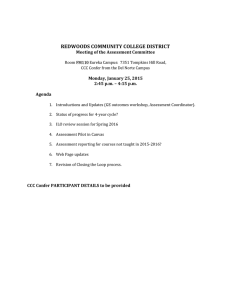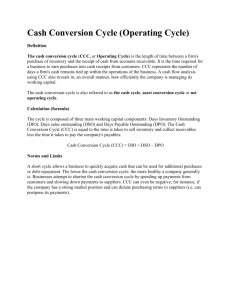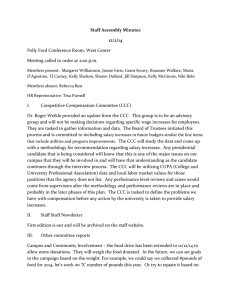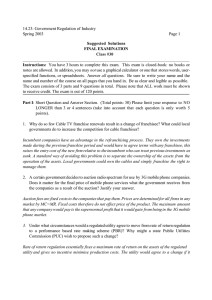Document 13572861
advertisement
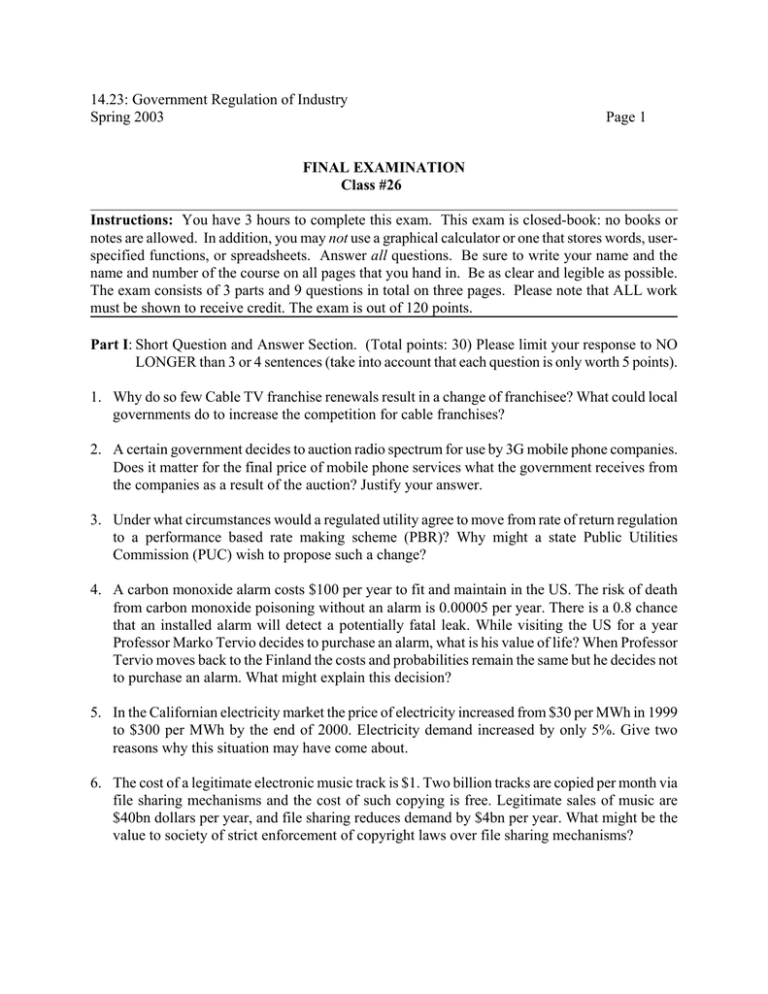
14.23: Government Regulation of Industry Spring 2003 Page 1 FINAL EXAMINATION Class #26 ______________________________________________________________________________ Instructions: You have 3 hours to complete this exam. This exam is closed-book: no books or notes are allowed. In addition, you may not use a graphical calculator or one that stores words, userspecified functions, or spreadsheets. Answer all questions. Be sure to write your name and the name and number of the course on all pages that you hand in. Be as clear and legible as possible. The exam consists of 3 parts and 9 questions in total on three pages. Please note that ALL work must be shown to receive credit. The exam is out of 120 points. Part I: Short Question and Answer Section. (Total points: 30) Please limit your response to NO LONGER than 3 or 4 sentences (take into account that each question is only worth 5 points). 1. Why do so few Cable TV franchise renewals result in a change of franchisee? What could local governments do to increase the competition for cable franchises? 2. A certain government decides to auction radio spectrum for use by 3G mobile phone companies. Does it matter for the final price of mobile phone services what the government receives from the companies as a result of the auction? Justify your answer. 3. Under what circumstances would a regulated utility agree to move from rate of return regulation to a performance based rate making scheme (PBR)? Why might a state Public Utilities Commission (PUC) wish to propose such a change? 4. A carbon monoxide alarm costs $100 per year to fit and maintain in the US. The risk of death from carbon monoxide poisoning without an alarm is 0.00005 per year. There is a 0.8 chance that an installed alarm will detect a potentially fatal leak. While visiting the US for a year Professor Marko Tervio decides to purchase an alarm, what is his value of life? When Professor Tervio moves back to the Finland the costs and probabilities remain the same but he decides not to purchase an alarm. What might explain this decision? 5. In the Californian electricity market the price of electricity increased from $30 per MWh in 1999 to $300 per MWh by the end of 2000. Electricity demand increased by only 5%. Give two reasons why this situation may have come about. 6. The cost of a legitimate electronic music track is $1. Two billion tracks are copied per month via file sharing mechanisms and the cost of such copying is free. Legitimate sales of music are $40bn dollars per year, and file sharing reduces demand by $4bn per year. What might be the value to society of strict enforcement of copyright laws over file sharing mechanisms? 14.23: Government Regulation of Industry Spring 2003 Page 2 Part II: Numeric Problems. (Total points: 50). Be sure to show all of your work. 7. (25 points) A profit-maximizing company has the chance to research the cure for the common cold (CCC). If it spends Z>1 on R&D, then it has probability p(Z) = 1-1/Z of discovering the CCC (and zero probability otherwise). Assume that the company has no other costs besides research costs, no other revenues other than those from selling the CCC if it discovers it. The present value (PV) of revenue from the CCC once discovered is Π> 5. Units for research costs, and CCC profits are millions of dollars. (a) How much will the company spend on research as a function of Π? (b) What are the expected profits in terms of Π? What happens if Π < 4? (c) Assuming no discounting, so that the PV of profits is just the sum of all future profits, and an annual profit of $0.15 million from monopoly exploitation of CCC, what is the minimum patent length that will induce the company to do any research? (d) Assume the patent is the length you worked out in the previous section. What is the maximum license fee the company could charge for the CCC? 8. (25 points) The demand for electricity is Qp=5-Pp in peak periods and Q0=4-2P0 in off-peak periods. Both periods take up half of each day. Variable cost is 0.25 per unit of output per period and capital cost capacity are 0.75 per unit of capacity per day. Capacity costs are sunk and cannot be adjusted between periods. (a) Find the optimal capacity, peak price and off-peak price. (b) With price constrained to be the same through the day, what price and capacity would maximise social surplus? (c) Compare consumer and social surplus in the two cases. 14.23: Government Regulation of Industry Spring 2003 Part III: Page 3 Essay (Total points: 40). 9.‘Senators Lieberman and McCain intend to introduce legislation early in the 108th Congress. The bill would require the Administrator of the EPA to promulgate regulations to limit the greenhouse gas emissions from the electricity generation, transportation, industrial, and commercial economic sectors as defined by EPA's Inventory of U.S. Greenhouse Gas Emissions and Sinks. The affected sectors represent approximately 85 percent of the overall U.S. emissions for the year 2000. The bill also would provide for the trading of emissions allowances and reductions through the government provided greenhouse gas database which would contain an inventory of emissions and registry of reductions.’ Joseph Lieberman Press Release 8 January 2003. Discuss the rationale for this type of legislation in the light of (1) its motivation and chances of success (2) how it is supposed to work (3) any theoretical and practical weaknesses of such a tradeable permits system for greenhouse gases. Try to use specific examples and evidence drawn from the class to support your views.


